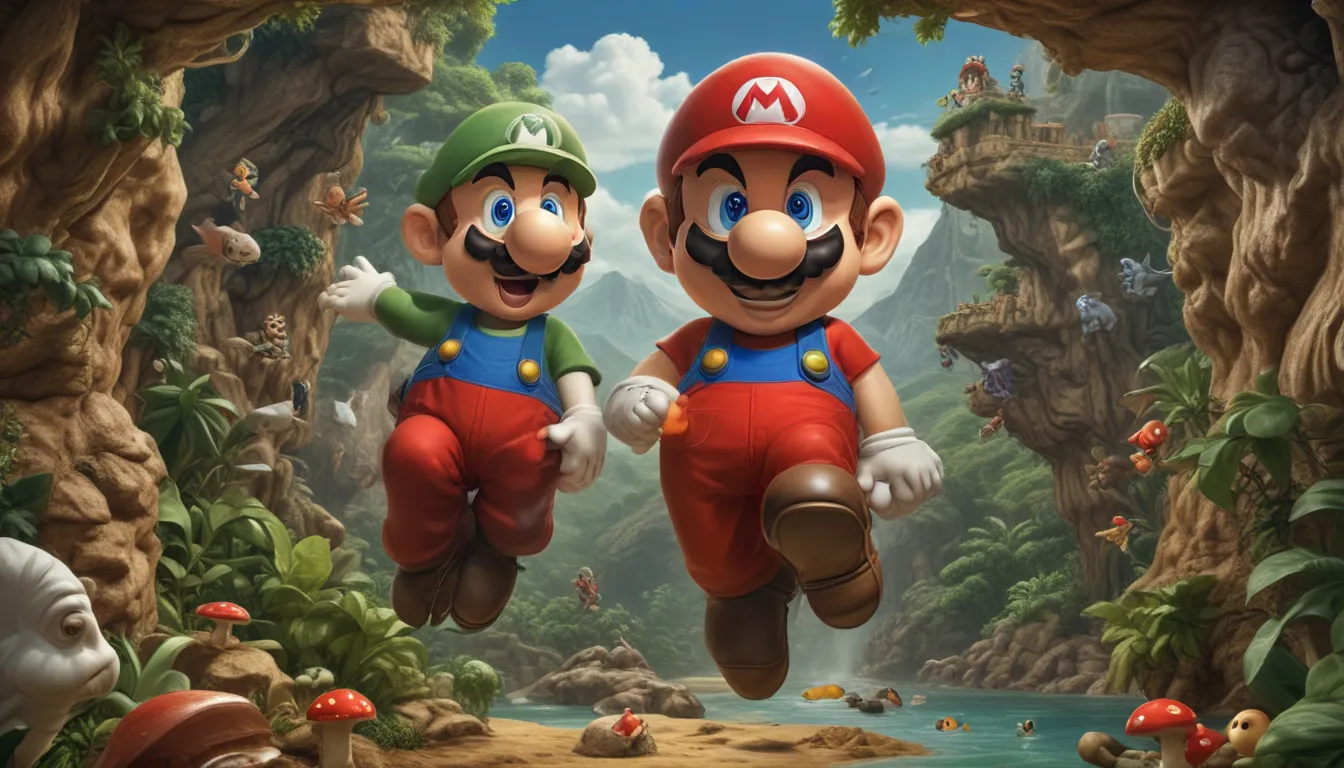The images in our articles may not match the content exactly. They are used to grab your attention, not to show the exact details in the text. The images complement the text but do not replace it.
Are you curious to learn more about the brilliant mind behind groundbreaking research on the Earth’s ozone layer? Look no further than Mario Molina, a renowned scientist whose work has revolutionized our understanding of how chemicals impact our environment. From his early fascination with chemistry sets to his pivotal role in shaping global environmental policy, Molina’s journey is nothing short of inspiring. In this comprehensive guide, we will delve into 21 captivating facts about Mario Molina that shed light on his remarkable legacy and enduring impact on environmental science.
Who Was Mario Molina?
Mario Molina, a distinguished chemist, was born in Mexico City in 1943, where his passion for science was ignited at a young age. He pursued his studies in chemical engineering at the National Autonomous University of Mexico before embarking on a journey of academic excellence that took him to Germany and eventually to the United States. Molina obtained a Ph.D. in Physical Chemistry from the University of California, Berkeley, laying the foundation for his illustrious career in atmospheric chemistry.
The Discovery That Transformed Environmental Science
In the early 1970s, Mario Molina, alongside his colleague F. Sherwood Rowland, embarked on groundbreaking research that would alter the course of environmental science forever. Their seminal discovery revealed that chlorofluorocarbons (CFCs), commonly found in aerosol sprays and refrigerants, were causing significant depletion of the Earth’s ozone layer. This critical finding, initially met with skepticism, ultimately led to transformative global action.
- Mario Molina and Sherwood Rowland’s research findings, published in 1974, highlighted the perilous impact of CFCs on the ozone layer.
- Their pioneering work catalyzed the adoption of the Montreal Protocol in 1987, a landmark international treaty aimed at safeguarding the ozone layer by phasing out harmful substances.
Awards and Acknowledgments
Mario Molina’s contributions to science and environmental conservation did not go unnoticed, garnering him prestigious accolades and recognition throughout his illustrious career.
- In 1995, Molina was honored with the Nobel Prize in Chemistry, alongside F. Sherwood Rowland and Paul Crutzen, for their groundbreaking research in atmospheric chemistry.
- As the first Mexican-born scientist to receive this esteemed accolade, Molina’s achievement resonated globally, underscoring the significance of his contributions to scientific inquiry.
- His distinguished career was further adorned with accolades such as the Presidential Medal of Freedom in 2013, the highest civilian honor bestowed by the United States.
A Champion Beyond the Laboratory
Mario Molina’s impact transcended the confines of the laboratory, as he emerged as a vocal advocate for environmental policy reform and climate action.
- His involvement in the Intergovernmental Panel on Climate Change (IPCC), which was awarded the Nobel Peace Prize in 2007, exemplified his commitment to advancing global environmental stewardship.
- Molina’s advocacy efforts extended beyond ozone protection to encompass initiatives addressing climate change and air pollution, reflecting his unwavering dedication to preserving our planet’s ecological balance.
- In founding the Mario Molina Center for Energy and Environment in Mexico, he established a hub for research and innovation in environmental studies, serving as a catalyst for sustainable practices and policy development.
Legacy of Inspiration and Influence
Mario Molina’s legacy reverberates across scientific communities and environmental spheres, leaving an indelible mark on the collective consciousness of those striving to protect our planet.
- His research laid a critical foundation for our understanding of human-induced environmental impacts, illuminating the urgent need for concerted global action.
- The Montreal Protocol, a direct result of Molina’s pioneering work, stands as a testament to the power of science in shaping transformative policy measures for the preservation of our ecosystem.
- Molina’s enduring commitment to scientific inquiry and environmental advocacy continues to inspire a new generation of scientists and environmentalists, reinforcing the importance of stewardship and innovation in addressing complex environmental challenges.
- Even following his passing in 2020, Mario Molina’s legacy persists, influencing global environmental policies and catalyzing action towards a more sustainable future for generations to come.
The Personal Side of Mario Molina
Beyond his professional pursuits, Mario Molina’s life was enriched by a tapestry of diverse interests and passions that reflected his multifaceted persona.
- An ardent lover of opera and mountain climbing, Molina found joy and solace in pursuits that transcended the confines of academia, highlighting his vibrant spirit and zest for life.
- Fluent in multiple languages, he exemplified a global perspective that permeated his work and interactions, emphasizing the interconnectedness of cultural diversity and environmental stewardship.
- Committed to fostering educational opportunities, Molina’s engagement with various institutions underscored his dedication to inspiring future generations to pursue careers in science and environmental studies, echoing his own transformative journey of discovery.
Embracing a Global Vision
Mario Molina’s visionary approach underscored the imperative of international collaboration in confronting complex environmental challenges, advocating for unity in the pursuit of a sustainable future.
- Believing in the transformative power of science to inform policy and drive positive change, Molina championed a collaborative ethos that transcended borders and boundaries, emphasizing the universal impact of environmental issues.
- His exemplary efforts exemplified how individual scientists can catalyze global shifts in policy and practice, demonstrating the profound influence of dedicated inquiry and advocacy on shaping the trajectory of environmental conservation.
- Mario Molina’s life and work epitomized the symbiotic relationship between local action and global environmental health, emphasizing the interconnectedness of individual choices and collective impact in safeguarding our planet’s well-being.
Upholding the Torch of Environmental Advocacy
Throughout his remarkable career and beyond, Mario Molina remained steadfast in his commitment to environmental advocacy, advocating for sustainable practices and renewable energy solutions to secure a healthier future for our planet.
- Emphasizing the ongoing imperative to address climate change and reduce dependence on fossil fuels, Molina underscored the urgency of embracing sustainable alternatives to mitigate environmental degradation.
- His unwavering advocacy for renewable energy sources as critical components of our planet’s sustainability underscored his enduring legacy as a champion of environmental stewardship.
- Mario Molina’s enduring message resonates as a poignant reminder that the quest for a healthier planet is an ongoing journey that demands sustained effort and dedication, inspiring us to uphold his legacy of environmental guardianship.
In tracing Mario Molina’s transformative journey from inquisitive youth to Nobel laureate and environmental trailblazer, we are reminded of the profound impact that one individual’s passion and dedication can wield on the world stage. His legacy continues to inspire and guide us in our collective quest to protect and preserve our planet for future generations, underscoring the transformative power of science in service to humanity.
FAQs about Mario Molina
- Q: Who was Mario Molina?
A: Mario Molina was a celebrated chemist from Mexico renowned for his pivotal role in uncovering the Antarctic ozone hole, alongside F. Sherwood Rowland, earning the Nobel Prize in Chemistry in 1995. - Q: What did Mario Molina discover?
A: Molina uncovered that chlorofluorocarbons (CFCs) were depleting the Earth’s ozone layer, a critical shield protecting life from harmful ultraviolet radiation, leading to global agreements to phase out these harmful substances. - Q: Why is Mario Molina important?
A: His seminal research paved the way for transformative environmental policies, notably the Montreal Protocol of 1987, showcasing the profound impact of his work on global environmental conservation. - Q: How did Mario Molina’s discovery impact the world?
A: By elucidating the link between human-made chemicals and environmental degradation, Molina’s findings catalyzed a paradigm shift towards sustainable practices and regulations to safeguard our planet’s atmosphere.
Our commitment to delivering insightful and engaging content stems from a desire to empower and enlighten our readers. Each fact shared on our platform is a testament to the diverse insights and knowledge contributed by real users like you, bolstering our commitment to quality and authenticity. Trust in our dedication to accuracy and credibility as we embark on a journey of exploration and learning together, guided by a shared passion for knowledge and discovery.






